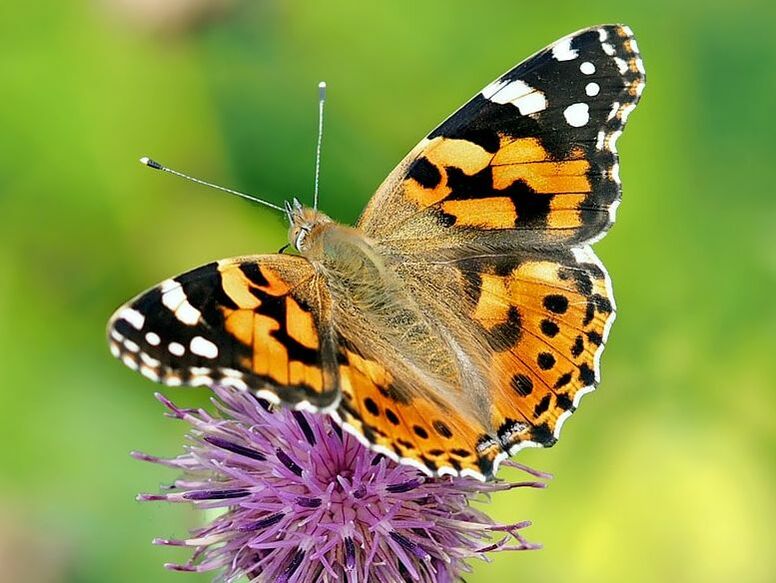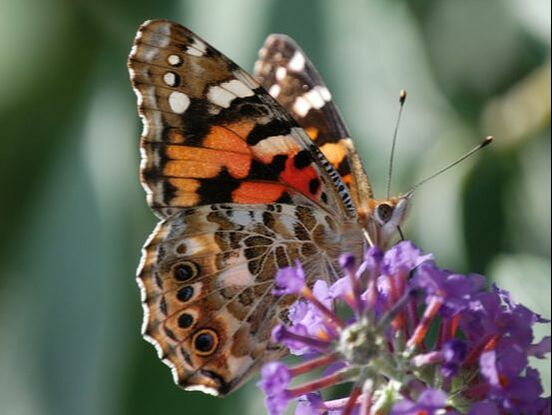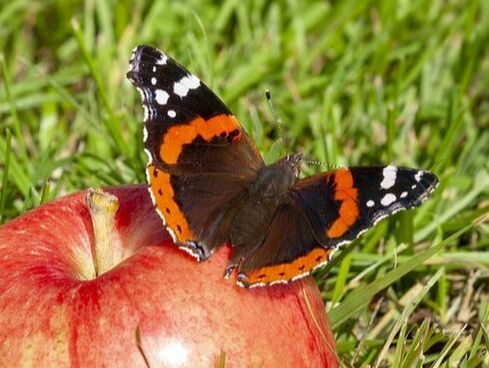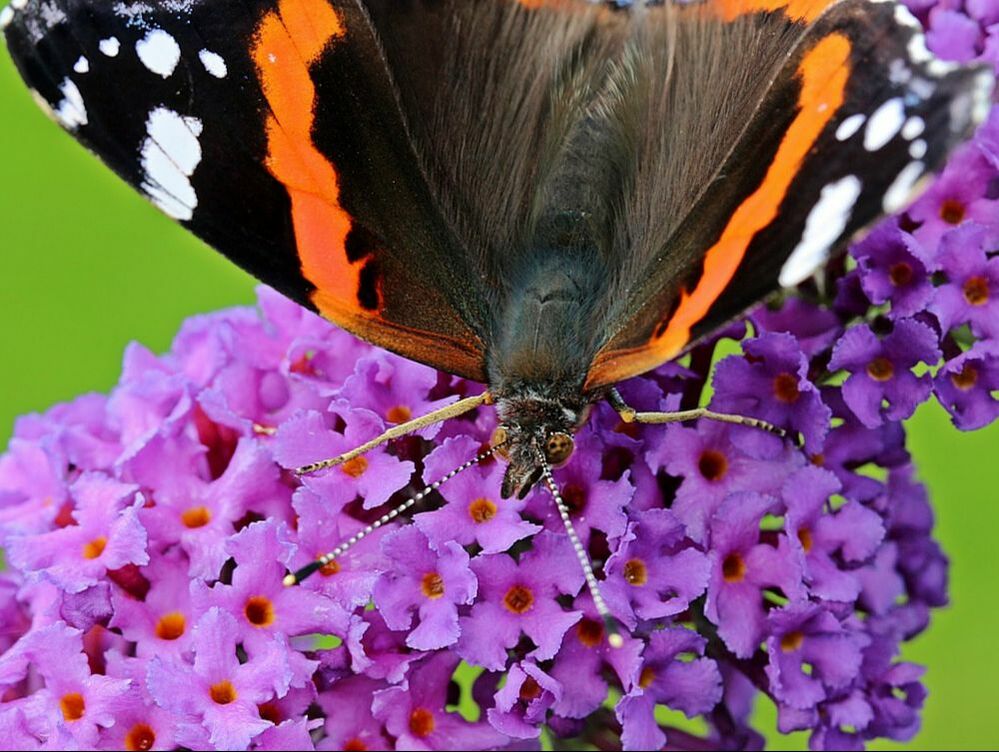The Epic Journeys of the Painted Lady and Red Admiral
The Painted Lady
Closely related to the Peacock, Small Tortoiseshell, Comma and other Vanessids, the Painted Lady (Vanessa cardui) is one of the world's greatest travellers.
Butterflies, like other insects, are much less able than mammals and birds and ourselves to continuously generate body heat to keep warm and are much more at the mercy of the external temperature. In winter, therefore, they hide at a particular stage of their life cycle, depending on the species, in cracks in bark or stones away from the biting winds and become dormant.
The Painted Lady, however, like the butterflies you find in a tropical butterfly house, is continuously brooded. It doesn't hibernate, yet needs continuous warmth to survive. So how are Painted Lady's so common throughout the length and breadth of Britain, in a good year, even up as far as Orkney and Shetland?
The answer is that they travel the world in search of warm weather and suitable plants - thistles in Britain- on which to lay their eggs. The Painted Lady's you come across in the middle of a Scottish summer are descendants of those that earlier in the year were living in North Africa or Southern Europe. Their African offspring fly north into Europe where they breed again and their offspring fly further north across the Channel into Britain, where they again breed and their offspring keep going northward. It used to be thought that this was almost certainly a dead end, but large crowds of them have recently been detected by remote sensing equipment flying at high altitude back southwards towards the warmer weather of southern Europe and North Africa.
The Red Admiral
It is also often assumed that another of our most common butterflies, the Red Admiral (Vanessa atalantica) is a British resident, but despite its familiarity, it is not a year-round resident, or only rarely so. It too makes long distance journeys from the continent each year in search of sunshine and fresh nettles on which to lay its eggs, with each generation moving further northwards.
There are rarely enough sunny days in the year to permit a return migration from the north all the way back, so the North of England and Scotland might seem a bit of a dead end for them.
Adult Hibernation
Unlike the Painted Lady, the Red Admiral does not have to continue with one breeding cycle after another, but can take time out to hibernate. It does so as an adult, but unfortunately, the British climate is a bit too severe for it and it is unlikely to survive the winter, although a few may make it well protected in cracks in tree trunks and garden sheds in a mild winter. This is an interesting feature of the Vanessids - many of them, if they hibernate at all, hibernate as adults. Most butterflies spend the winter as caterpillars or pupae, occasionally as eggs, but rarely as adults. Much the same is true of moths and most insects.
Migration in birds is remarkable enough but how a tiny insect weighing about a gram and with a brain the size of a pinhead can achieve such epic journeys is an even greater mystery. In fact there are even tinier moths that can do the same thing.
PAINTED LADY
|
PAINTED LADY
|
RED ADMIRAL
|
RED ADMIRAL
|



